How to Be a Modern Cowboy or Cowgirl
The cowboy is, perhaps, the most American icon. Subject of myth and hero of films, cowboys are known the world over as a potent symbol of American resilience, independence, courage, and fortitude.
But what was it really like to be a cowboy in the Wild West? The popular image of the gunslinging, stoic hero cowboy we’ve come to know through popular culture is a far cry from the life of a cowboy on the Texas frontier. Being a cowboy was a difficult, grueling, and dangerous job.
Recapture what it was like to be one of these trailblazing icons during the days of the Wild West through modern experiences, ranging from horseback journeys to primitive camping.
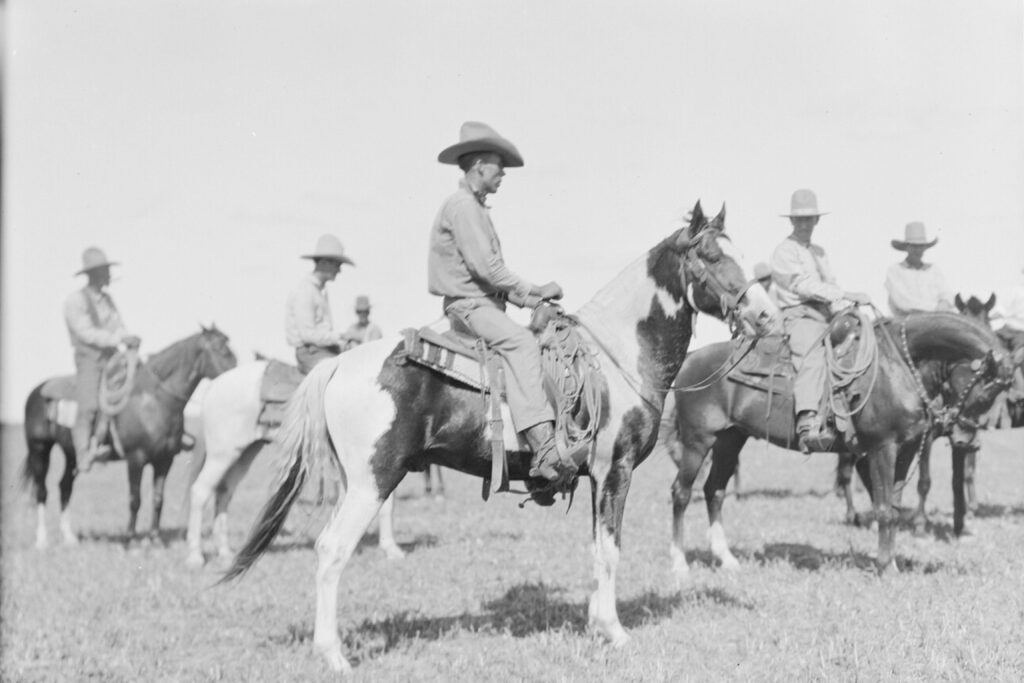
The Real Texas Cowboys
Cowboys have their roots in Spanish culture. After the Spanish began to colonize the Americas, they established large ranches worked by vaqueros, who herded cattle on imported horses. The Texas landscape was well suited for large cattle ranches, and as Anglo settlers began to move in, they adopted not only the ranching model but also some of the vaquero culture, including the wide-brimmed hats, tasseled pants, and skilled horsemanship.
The arrival of the railroads in the 1800s gave birth to the cattle drive. Cowboys no longer simply herded their cattle on ranches but drove huge herds of cattle to railroad hubs, where they were loaded and shipped off to cities. These drives helped shape the life and myth of the cowboy as a wandering loner, hardened by long days on the trail. After the Civil War, demand for beef skyrocketed, and by the late-1860s, millions of cattle were driven to cities like Fort Worth and Kansas City along now famous routes like the Chisholm Trail.
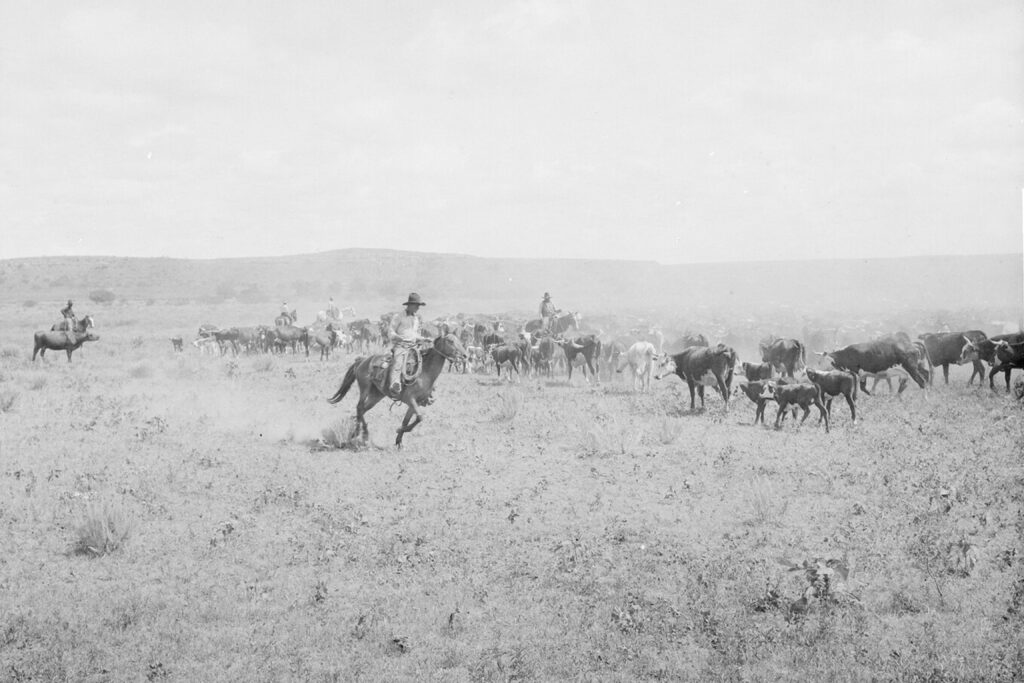
Life of Cowboys
Unlike the image of the pistol-toting adventurer, real cowboys were low-paid, hardworking laborers. In addition to herding cattle, they needed to care for their horses, repair ranch fences and gear, and survive in harsh conditions. The frontier towns they visited along the trail were often dangerous places. Cowboys’ most essential job was keeping track of cattle.
Throughout most of the year, cattle roamed freely across vast acreages of land. But in the spring and fall, cowboys were tasked with rounding up the herds, sorting them by ranch, and branding and counting the animals. After the roundup, cowboys sometimes organized the herds into huge cattle drives, and some drives, like the Chisholm Trail, stretched for more than 600 miles from San Antonio to Abilene, Kansas. The herds could be as large as 2,000 and were run by a trail boss and a dozen cowboys.
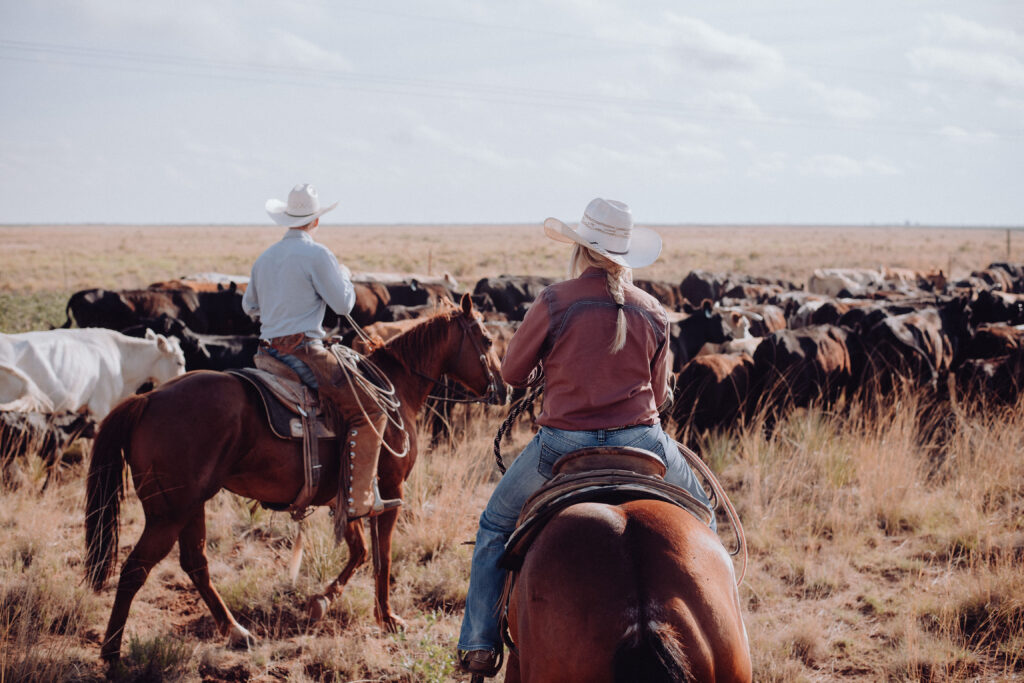
The End of the Classic Cowboy
The classic era of the cowboy ended with the advent of new technologies that changed the cattle industry. As the West became more settled, farmers and ranchers began to use barbed wire fences to close in their land, and the long cattle drives could no longer stretch freely across the West. As railroads expanded, long drives were also not needed. Many ranchers could more easily move their herds to market via rail.
But even though the great drives across the frontier ended, the cowboy didn’t completely disappear. Cowboys continued to work ranches, herding and managing cattle. Today, working cowboys continue to be a staple of Texas life and culture, keeping alive the traditions and allure of this quintessential Texan profession.
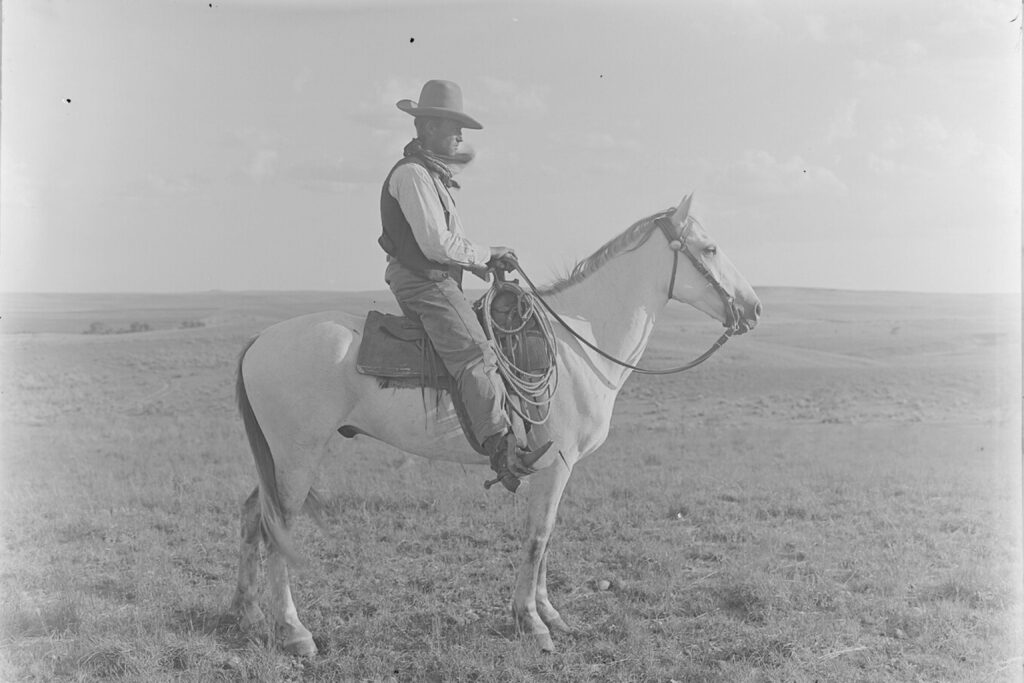
Dress Like a Cowboy
The cowboy outfit was born of practical needs rather than fashion sense. But that’s not to say you can’t be both. Get inspired by the quintessential elements of a cowboy’s attire:
- Pointed-toe boots. These were designed to slip easily out of stirrups. Getting a foot stuck in a stirrup could lead to being dragged, which could be fatal.
- Cowboy hats. The cowboy hat not only kept sun and rain off cowboys but could be used as a pillow or a cup.
- Bandanas. The trails were dusty and dirty, and bandanas were worn as protection from the large plumes of dust the cattle kicked up.
- Chaps. These protected cowboys from the rough terrain they encountered along the way, from spiny thorn bushes to prickly mesquite.
Saddle Up
Horseback riding is an essential part of learning how to be a cowboy. There are plenty of places around the Lone Star State where even the most unseasoned cowboy or cowgirl can tap into their inner frontier spirit. Here are a few of our picks:
- Cowgirls and Cowboys in the West, Amarillo: Located on the rim of majestic Palo Duro Canyon, this ranch offers open range riding that allows visitors to experience what it really felt like to cross the untamed Texas plains on horseback.
- Dixie Dude Ranch, Bandera: Bandera is a hotbed for Texas dude ranches. Among the many highly recommended options, Dixie Dude Ranch stands out. One reason why: Real cowboys staff the ranch, tend to goats, longhorns, and pigs, and work in rodeos. At Dixie Dude, visitors can learn how to be a cowboy with riding and horse skills taught by the real deal.
- Cibolo Creek Ranch, Marfa: For amateur cowboys and cowgirls who want to experience the landscape on horseback without roughing it like the real deal, head to Cibolo Creek. Horseback tours of the Chinati Mountains offer the opportunity to view Native American rock art before retreating to a luxury ranch resort.
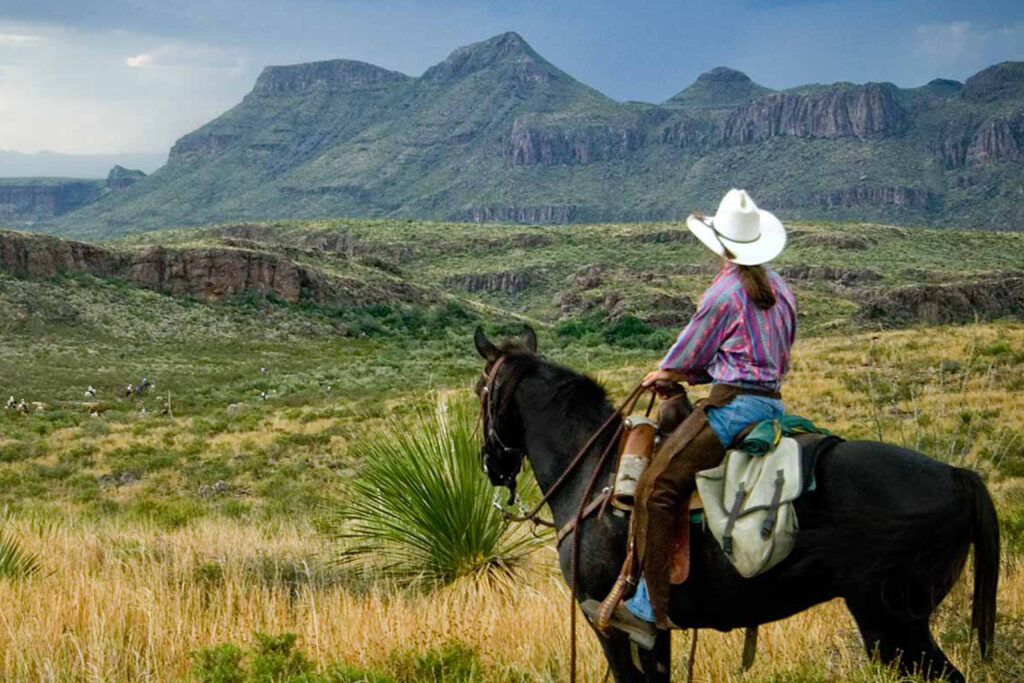
Rough It Like a Cattle Driver
Go back to basics at these iconic Texas state parks.
- Big Bend Ranch State Park: The massive West Texas park has more than 238 miles of trails, and most are open for equestrian use. Permits are required for overnight camping and be sure your horse is up for the task of tackling this rough terrain.
- Brazos Bend State Park: The 6-mile multi-use trail at Brazos Bend is perfect for riders who want to dip their toes into horseback primitive camping.
- Caprock Canyons State Park & Trailway: Perhaps the best real-life cowboy experience you can have in Texas is to camp along the 64-mile Caprock Canyons State Park & Trailway. You’ll feel like you’ve mastered how to be a cowboy crossing through open Panhandle prairie that looks much like it did during the days of the cattle drives. Here, intrepid riders can spend a few days riding and camping in the wilderness.
Learning how to be a cowboy is only part of embracing Texas’ rich history. Step into the Wild West and read up on the most notorious Texas outlaws.
© 2023 Texas Farm Bureau Insurance



